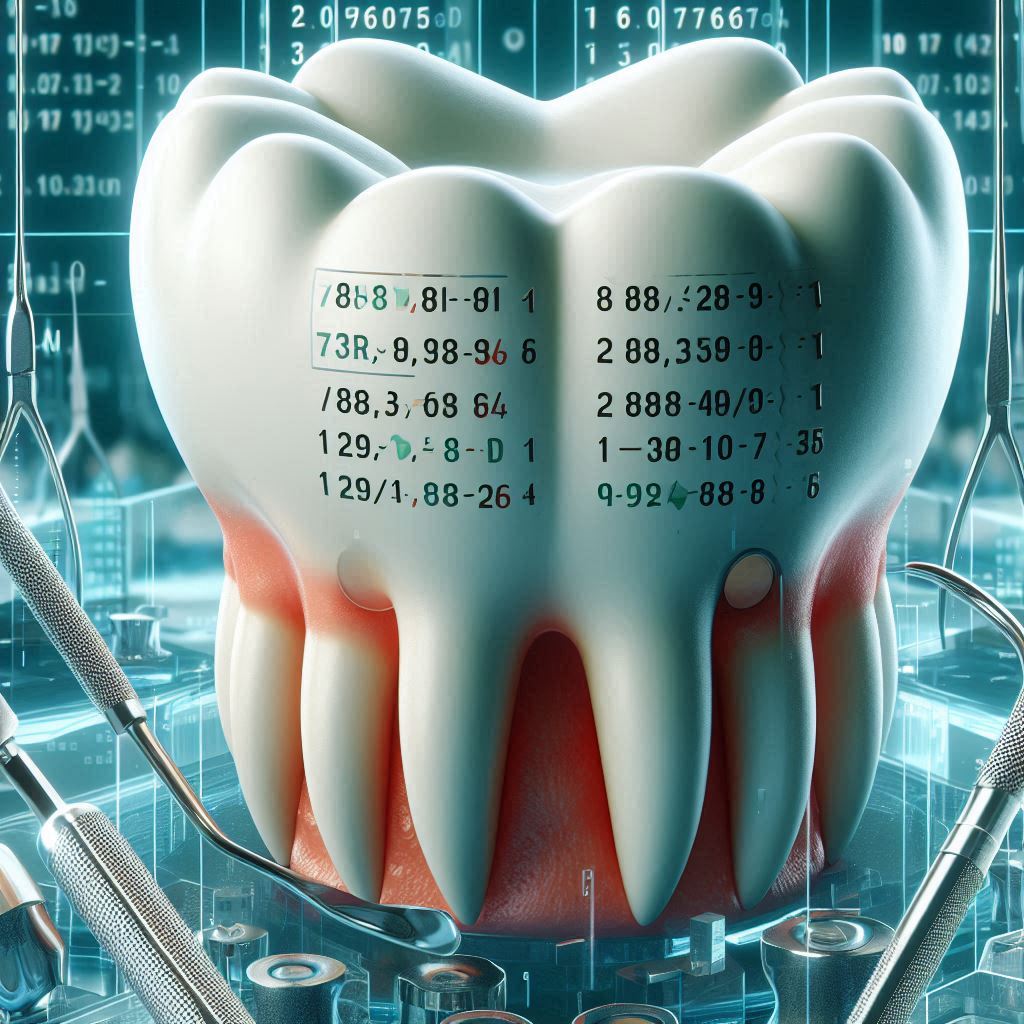Dental Code SRP 1-3 Teeth
Scaling and Root Planing (SRP) is a cornerstone of periodontal therapy, essential for treating gum disease and maintaining oral health. When it comes to dental coding, SRP for 1-3 teeth is a specific procedure that requires precision and expertise. This article delves into the intricacies of dental code SRP 1-3 teeth, exploring its definition, ADA codes, procedural details, benefits, and more. Whether you’re a dental professional seeking clarity or a patient curious about the process, this guide provides a comprehensive overview to help you understand this critical dental procedure.

2. Understanding Dental Code SRP 1-3 Teeth
What is Scaling and Root Planing (SRP)?
Scaling and Root Planing, commonly referred to as SRP, is a non-surgical procedure used to treat gum disease. It involves the removal of plaque, tartar, and bacterial toxins from the tooth surfaces and root areas. This process helps to smooth the root surfaces, allowing the gums to reattach to the teeth and preventing further progression of periodontal disease.
Why is SRP Necessary?
Gum disease, if left untreated, can lead to tooth loss, bone deterioration, and systemic health issues such as heart disease and diabetes. SRP is often the first line of defense against periodontal disease, especially in its early stages.
Dental Code SRP 1-3 Teeth: Definition and Scope
Dental code SRP 1-3 teeth refers to the scaling and root planing procedure performed on one to three teeth within a single quadrant of the mouth. This code is used to bill for the treatment of localized periodontal disease, ensuring that the procedure is accurately documented and reimbursed.
3. Dental Code SRP 1-3 Teeth Quadrant Breakdown
What is a Dental Quadrant?
The mouth is divided into four quadrants: upper right, upper left, lower right, and lower left. Each quadrant contains a specific number of teeth, and dental procedures are often categorized based on these quadrants.
How SRP is Applied to 1-3 Teeth in a Quadrant
When SRP is performed on 1-3 teeth, it targets a specific area of concern within a quadrant. This localized approach is ideal for patients with early-stage gum disease or those who require targeted treatment.
4. Dental Code SRP 1-3 Teeth ADA Code
Overview of ADA Codes
The American Dental Association (ADA) has established a standardized coding system, known as the Current Dental Terminology (CDT), to ensure uniformity in dental billing and documentation.
Specific ADA Code for SRP 1-3 Teeth
The ADA code for SRP performed on 1-3 teeth within a single quadrant is D4341. This code is used to bill for the procedure and is recognized by most insurance providers.
5. The Procedure: Step-by-Step Guide to SRP 1-3 Teeth
Pre-Procedure Preparation
- Patient Evaluation: A thorough examination is conducted to assess the extent of gum disease.
- Anesthesia: Local anesthesia is often administered to ensure patient comfort.
The SRP Process
- Scaling: Removal of plaque and tartar from the tooth surfaces.
- Root Planing: Smoothing of the root surfaces to promote gum reattachment.
- Irrigation: Cleaning the area to remove debris and bacteria.
Post-Procedure Care
- Oral Hygiene Instructions: Patients are advised on proper brushing and flossing techniques.
- Follow-Up Appointments: Regular check-ups are essential to monitor healing and prevent recurrence.
6. Benefits of SRP for 1-3 Teeth
Preventing Gum Disease
SRP effectively halts the progression of gum disease, preserving the health of the teeth and gums.
Improving Oral Health
By removing bacterial deposits, SRP reduces inflammation and promotes healthier gum tissue.
Long-Term Cost Savings
Early intervention with SRP can prevent the need for more expensive treatments, such as surgery or tooth extraction.
7. Risks and Considerations
Potential Complications
- Tooth Sensitivity: Some patients may experience temporary sensitivity after the procedure.
- Gum Recession: In rare cases, SRP can lead to gum recession.
Who is a Good Candidate for SRP?
Patients with early-stage gum disease or localized periodontal issues are ideal candidates for SRP 1-3 teeth.
8. SRP 1-3 Teeth vs. Full Mouth SRP
Key Differences
- Scope: SRP 1-3 teeth targets a specific area, while full mouth SRP treats the entire mouth.
- Cost: SRP 1-3 teeth is generally less expensive than full mouth SRP.
When to Choose SRP for 1-3 Teeth
This option is best for patients with localized gum disease or those who cannot undergo a full mouth procedure due to financial or medical constraints.
9. Insurance and Billing for SRP 1-3 Teeth
How Insurance Covers SRP
Most dental insurance plans cover SRP, but the extent of coverage may vary. It’s essential to verify benefits with the insurance provider.
Common Billing Challenges
- Pre-Authorization: Some insurers require pre-authorization for SRP.
- Documentation: Accurate documentation is crucial for successful reimbursement.
10. Frequently Asked Questions (FAQs)
Q1: Is SRP painful?
A: The procedure is typically performed under local anesthesia, so patients should not feel pain during the process. Some discomfort may occur afterward, but it is usually manageable with over-the-counter pain relievers.
Q2: How long does SRP take?
A: The duration of SRP depends on the extent of the treatment. For 1-3 teeth, the procedure usually takes 30-60 minutes.
Q3: How often should SRP be done?
A: SRP is not a routine procedure and is only performed when necessary. Regular dental cleanings and good oral hygiene can help prevent the need for SRP.
11. Conclusion
Dental code SRP 1-3 teeth is a vital procedure for treating localized gum disease and maintaining oral health. By understanding the ADA codes, procedural details, and benefits, both dental professionals and patients can make informed decisions about this essential treatment.


